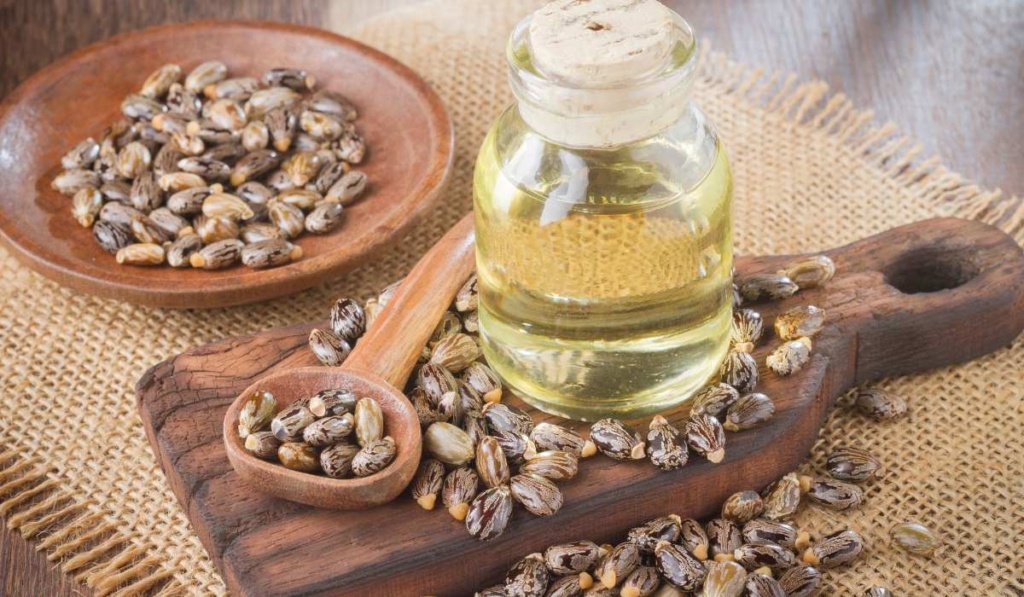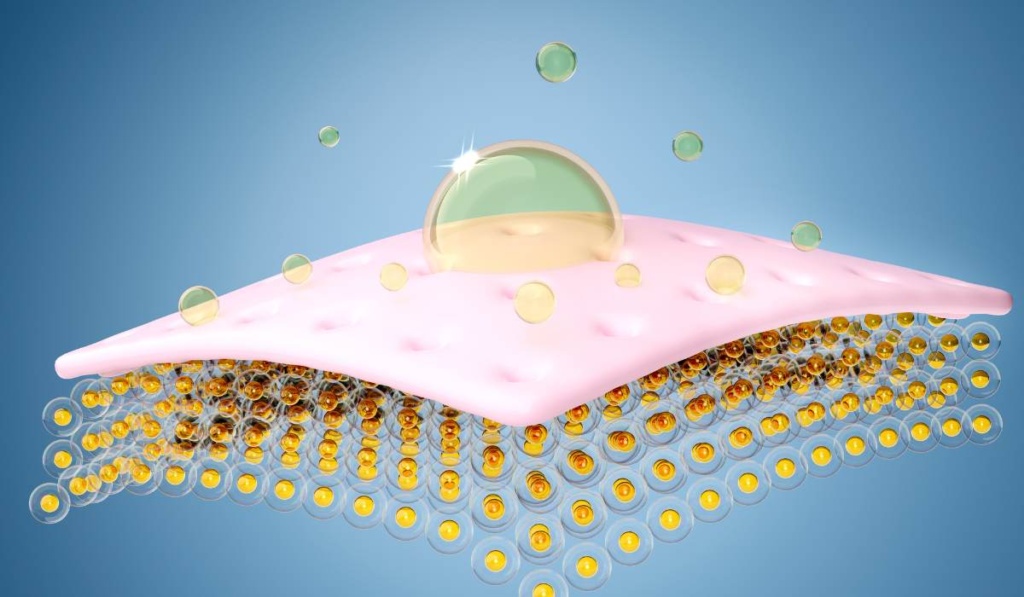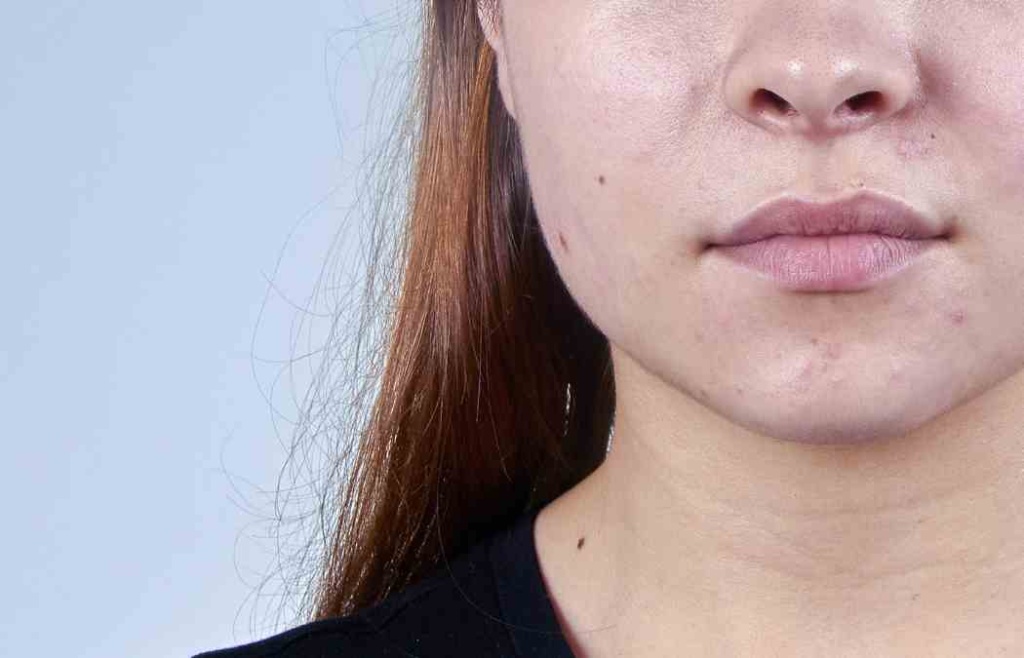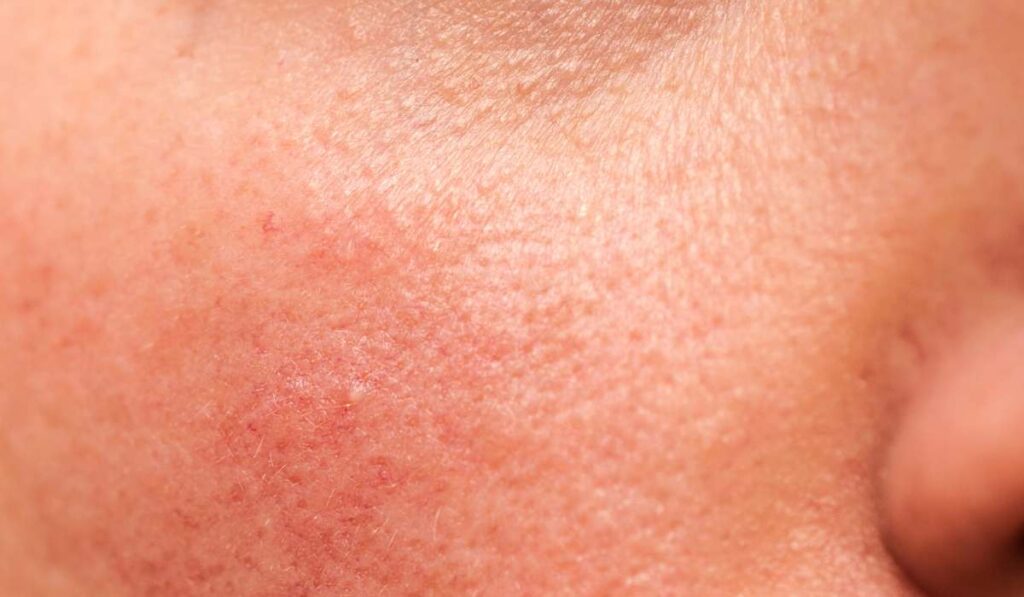Glow Up Naturally: My Ultimate Guide to a DIY Skincare Routine for Every Skin Type!
Taking care of your skin is essential for maintaining a healthy and youthful appearance. However, finding the right skincare products can be challenging, not to mention expensive.
That’s why many people are turning to DIY skincare routines that use natural ingredients to achieve healthy and glowing skin. I started making my own skincare back in 2018 and have not looked back!
In this article, we will discuss the benefits of DIY skincare, some essential ingredients to include in your routine, and a simple DIY skincare routine for every skin type to get you started.
Benefits of DIY Skincare…
There are several benefits to using a DIY skincare routine.
👉👉 FIRSTLY, it can save you money. Most natural ingredients used in DIY skincare are affordable and readily available. Additionally, you can customize your skincare routine to meet your unique needs, allowing you to address specific skin concerns like dryness, acne, or dullness.
👉👉 SECONDLY, DIY skincare is generally more environmentally friendly than commercial products. Many skincare products contain synthetic ingredients that can be harmful to the environment. By making your skincare products, you can control the ingredients and ensure that they are environmentally friendly.
👉👉 LASTLY, DIY skincare is an excellent way to connect with nature and understand how natural ingredients can benefit your skin. You’ll also have the satisfaction of knowing exactly what’s going into your skincare products.
Please give making your own skincare a try. It is SO EASY you will wonder why you didn’t try it before!
Essential Ingredients for DIY Skincare

Before you start your DIY skincare routine, it’s essential to know which ingredients to include.
Some of the most popular natural ingredients for skincare include (don’t worry if you don’t have them all):
- Coconut oil – Coconut oil is an excellent moisturiser that’s rich in fatty acids and Vitamin E.
- Agave syrup or maple syrup – I’m vegan so I don’t use honey any longer (Agave syrup and maple syrup, both vegan alternatives to honey, act as natural humectants, meaning they draw moisture into the skin, helping to keep it hydrated. Agave contains saponins, plant compounds that reduce inflammation and boost the immune system, promoting healing. Maple syrup is rich in antioxidants, which protect against skin damage, and minerals like zinc and manganese, supporting skin health and repair.)
- Aloe vera – Aloe vera is a natural anti-inflammatory that can soothe irritated skin.
- Green tea – Green tea contains antioxidants that can help protect your skin from environmental stressors like pollution.
- Jojoba oil – Jojoba oil is an excellent moisturiser that’s easily absorbed by the skin. It’s also rich in Vitamin E and antioxidants.
- Shea butter – Shea butter is a rich moisturiser that can help soothe dry and irritated skin.
- Rosehip oil – Rosehip oil is high in Vitamin A, which can help reduce the appearance of fine lines and wrinkles.
- Avocado oil – Avocado oil is rich in fatty acids and antioxidants that can help nourish and hydrate the skin.
- Tea tree oil – Tea tree oil has antibacterial and anti-inflammatory properties that can help fight acne.
- Lavender oil – Lavender oil has calming properties that can help soothe the skin and reduce inflammation.
- Chamomile tea – Chamomile tea has anti-inflammatory properties that can help soothe irritated skin.
- Cucumber – Cucumber has cooling properties that can help reduce puffiness and inflammation.
- Lemon juice – Lemon juice has antibacterial properties that can help fight acne and brighten the skin.
- Almond oil – Almond oil is a lightweight moisturiser that can help nourish the skin without clogging pores.
- Turmeric – Turmeric has anti-inflammatory properties that can help reduce redness and inflammation.
- Oatmeal – Oatmeal has soothing properties that can help calm irritated skin.
- Apple cider vinegar – Apple cider vinegar has antibacterial properties that can help fight acne and balance the skin’s pH levels.
- Grapefruit oil – Grapefruit oil has antibacterial and astringent properties that can help fight acne. However, citrus oils like grapefruit oil can be phototoxic, meaning they make the skin more sensitive to sunlight and can cause burns if exposed to UV rays. Always dilute grapefruit oil properly—use no more than 1-2 drops per tablespoon of carrier oil. Apply in the evening to avoid sun exposure, or if used during the day, ensure you wear sunscreen and avoid direct sunlight for at least 12 hours after application.
- Calendula – Calendula has anti-inflammatory properties that can help soothe irritated skin.
- Shea nut oil – Shea nut oil is rich in Vitamin A and E, which can help improve skin texture and reduce the appearance of fine lines and wrinkles.
- Peppermint oil – Peppermint oil has a cooling effect that can help soothe irritated skin. ALWAYS dilute with a carrier oil to avoid irritation or reactions. I’d say about 1 drop per 1 tablespoon of carrier oil.
- Papaya – Papaya contains enzymes that can help exfoliate and brighten the skin.
- Rose water – Rose water has hydrating properties that can help soothe and moisturise the skin.
- Frankincense oil – Frankincense oil has anti-aging properties that can help improve skin elasticity and reduce the appearance of fine lines and wrinkles.
- Witch hazel – Witch hazel has astringent properties that can help tighten and tone the skin.
DIY Skincare Routine for Normal Skin

Now that you know the benefits of DIY skincare and the essential ingredients, let’s take a look at a simple DIY skincare routine for normal skin.
- Cleanse – Start by washing your face with a gentle cleanser. You can make your own by mixing coconut oil with a small amount of agave syrup. Massage the mixture onto your face in circular motions, then rinse with warm water.
- Tone – After cleansing, use a toner to help balance your skin’s pH levels. You can make a simple toner by brewing green tea, letting it cool, and then applying it to your face with a cotton pad.
- Moisturise – Finish off your DIY skincare routine by applying a moisturiser. You can make your own by mixing aloe vera gel with jojoba oil. Apply the mixture to your face and neck in upward motions.
DIY Skincare Routine for Combination Skin
- Cleanse: Start by cleansing your skin with a gentle cleanser to remove dirt and oil buildup. For combination skin, look for a cleanser that is gentle enough not to strip the skin’s natural oils, but still effective in removing excess oil from the T-zone. A DIY option is a mixture of equal parts agave syrup and jojoba oil, applied to the face and rinsed off with warm water.
- Tone: Use a toner to help balance the skin’s pH levels and remove any remaining impurities. An apple cider vinegar toner is a great option for combination skin, as it can help to regulate oil production. Mix 1 part vinegar to 4-5 parts water, apply to a cotton pad and swipe over the face.
- Exfoliate (1-2 times per week): Exfoliation helps remove dead skin cells and unclog pores. Baking soda can help BUT IT IS VERY alkaline and can disrupt the skin’s natural pH balance, leading to dryness or irritation. If you choose to use it, mix a small amount (1/2 teaspoon) of baking soda with water, apply gently to the face in circular motions, and rinse off with warm water. Limit use to once a week and always follow with a moisturiser to restore hydration.
- Mask (1-2 times per week): Using a mask can help to hydrate and nourish the skin. For combination skin, a clay mask can help to absorb excess oil in the T-zone while still providing hydration to other areas of the face. Mix equal parts bentonite clay and water, apply to the face, and leave on for 10-15 minutes before rinsing off with warm water.
- Moisturise: Finish off your skincare routine by moisturising your skin to keep it hydrated and nourished. For combination skin, look for a lightweight, oil-free moisturiser that won’t clog pores or leave the skin feeling greasy. A DIY option is a mixture of aloe vera gel and a few drops of jojoba oil applied to the face.
By following this DIY skincare routine for combination skin, you can help to balance and nourish your skin, leaving it healthy, hydrated, and glowing.
DIY Skincare Routine for Oily Skin

- Cleanse: Start by cleansing your skin with a gentle cleanser that is specifically formulated for oily skin. A DIY option is a mixture of 1 tablespoon of agave syrup and 1 tsp of apple cider vinegar, applied to the face and rinsed off with warm water.
- Tone: Use a toner to help balance the skin’s pH levels and remove any remaining impurities. A witch hazel toner is a great option for oily skin, as it can help to reduce oil production. Mix equal parts witch hazel and water, apply to a cotton pad and swipe over the face.
- Exfoliate (1-2 times per week): Exfoliation helps to remove dead skin cells and unclog pores. For oily skin, a gentle exfoliant such as finely ground oats or rice mixed with a few drops of jojoba oil can be used 1-2 times per week. Apply the mixture to the face in circular motions, then rinse with warm water.
- Mask (1-2 times per week): Using a mask can help to absorb excess oil and impurities from the skin. For oily skin, a clay mask can help to absorb excess oil and unclog pores. Mix equal parts bentonite clay and water, apply to the face, and leave on for 10-15 minutes before rinsing off with warm water.
- Moisturise: Finish off your skincare routine by moisturising your skin with a lightweight, oil-free moisturiser that won’t clog pores or leave the skin feeling greasy. A DIY option is a mixture of aloe vera gel and a few drops of tea tree oil applied to the face.
By following this DIY skincare routine for oily skin, you can help to control oil production and keep your skin looking healthy and balanced.
DIY Skincare Routine for Acne-Prone Skin
- Cleanse: Start by cleansing your skin with a gentle cleanser that is specifically formulated for acne-prone skin. A DIY option is a mixture of 1 tablespoon of agave syrup and 2 drops of tea tree oil, applied to the face and rinsed off with warm water.
- Tone: Use a toner to help balance the skin’s pH levels and remove any remaining impurities. An apple cider vinegar toner is a great option for acne-prone skin, as it can help to regulate oil production and prevent breakouts. Mix 1 part vinegar to 4-5 parts water, apply to a cotton pad and swipe over the face.
- Treat: Apply a spot treatment to any active acne breakouts to help reduce inflammation and promote healing. A DIY option is a mixture of a few drops of tea tree oil and aloe vera gel, applied directly to the affected area.
- Exfoliate (1-2 times per week): Exfoliation helps to remove dead skin cells and unclog pores, which can help to prevent future breakouts. For acne-prone skin, a gentle exfoliant such as oatmeal mixed with water can be used 1-2 times per week. Apply the mixture to the face in circular motions, then rinse with warm water.
- Mask (1-2 times per week): Using a mask can help absorb excess oil and impurities from the skin. For acne-prone skin, an agave syrup and cinnamon mask may help reduce inflammation, but cinnamon can be quite strong and potentially irritating. To use safely, mix 1 tablespoon of agave syrup with a pinch of cinnamon (start with 1/8 teaspoon or less). Apply to a small patch of skin first to test for any reaction. If well tolerated, apply to the face, avoiding sensitive areas, and leave on for 5-10 minutes before rinsing off with warm water.
- Moisturise: Finish off your skincare routine by moisturising your skin with a lightweight, oil-free moisturiser that won’t clog pores or exacerbate breakouts. A DIY option is a mixture of aloe vera gel and a few drops of lavender oil applied to the face (2-3 drops).
By following this DIY skincare routine for acne-prone skin, you can help to prevent breakouts, reduce inflammation, and promote healing, leaving your skin looking clear and healthy.
DIY Skincare Routine for Sensitive Skin

- Cleanse: Start by cleansing your skin with a gentle cleanser that is specifically formulated for sensitive skin. A DIY option is a mixture of 1 tablespoon of chamomile tea and 1 tablespoon of jojoba oil, applied to the face and rinsed off with warm water.
- Tone: Use a toner to help balance the skin’s pH levels and soothe any irritation. A rose water toner is a great option for sensitive skin, as it can help to calm inflammation and reduce redness. Apply rose water to a cotton pad and swipe over the face.
- Soothe: Apply a soothing serum to the skin to help reduce inflammation and soothe any irritation. A DIY option is a mixture of aloe vera gel and a few drops of chamomile essential oil, applied to the face.
- Moisturise: Finish off your skincare routine by moisturising your skin with a gentle, fragrance-free moisturiser. A DIY option is a mixture of 1 tablespoon of shea butter and 1 tablespoon of coconut oil, applied to the face (replace shea butter and coconut oil for jojoba oil if you have oily, acne-prone or combination skin).
- Protect: Protect your skin from the sun by applying a natural, fragrance-free sunscreen with an SPF of at least 30.
By following this DIY skincare routine for sensitive skin, you can help to soothe irritation, reduce inflammation, and keep your skin looking and feeling healthy. Remember to always patch test any new products before applying them to your face, and consult with a dermatologist if you have any concerns about your skin.
DIY Skincare Routine for Mature Skin

- Cleanse: Start by cleansing your skin with a gentle cleanser that is specifically formulated for mature skin. A DIY option is a mixture of 1 tablespoon of agave syrup and 1 tablespoon of coconut oil, applied to the face and rinsed off with warm water.
- Tone: Use a toner to help hydrate and plump up the skin. A rose water toner is a great option for mature skin, as it can help to restore elasticity and reduce the appearance of fine lines and wrinkles. Apply rose water to a cotton pad and swipe over the face.
- Boost: Apply a serum to the skin to help boost collagen production and improve skin firmness. A DIY option is a mixture of 1 tablespoon of argan oil and a few drops of vitamin E oil, applied to the face.
- Moisturise: Finish off your skincare routine by moisturising your skin with a rich, nourishing moisturiser. A DIY option is a mixture of 1 tablespoon of shea butter and 1 tablespoon of jojoba oil, applied to the face.
- Treat (1-2 times per week): Use a face mask to help nourish and rejuvenate the skin. A DIY option is a mixture of 1 tablespoon of mashed avocado and 1 tablespoon of agave syrup, applied to the face and left on for 10-15 minutes before rinsing off with warm water.
By following this DIY skincare routine for mature skin, you can help to improve skin elasticity, reduce the appearance of fine lines and wrinkles, and keep your skin looking and feeling healthy. Remember to always patch test any new products before applying them to your face, and consult with a dermatologist if you have any concerns about your skin.
DIY Skincare Routine for Men

- Cleanse: Start by cleansing your skin with a gentle facial cleanser. A DIY option is a mixture of 1 tablespoon of castile soap and 1 tablespoon of distilled water, applied to the face and rinsed off with warm water.
- Exfoliate (1-2 times per week): Use an exfoliating scrub to help remove dead skin cells and unclog pores. A DIY option is a mixture of 1 tablespoon of coffee grounds and 1 tablespoon of coconut oil, applied to the face in circular motions and rinsed off with warm water.
- Tone: Use a toner to help balance the skin’s pH levels and prevent ingrown hairs. A witch hazel toner is a great option for men’s skin, as it can help to soothe inflammation and reduce redness. Apply witch hazel to a cotton pad and swipe over the face.
- Moisturise: Finish off your skincare routine by moisturising your skin with a lightweight, non-greasy moisturiser. A DIY option is a mixture of 1 tablespoon of aloe vera gel and 1 tablespoon of grapeseed oil, applied to the face.
- Shave: If you shave regularly, use a shaving cream or gel that is specifically formulated for men’s skin to help prevent razor burn and irritation. A DIY option is a mixture of 1 tablespoon of shea butter and 1 tablespoon of coconut oil, applied to the face before shaving.
By following this DIY skincare routine for men, you can help to improve skin texture, prevent ingrown hairs, and keep your skin looking and feeling healthy. Remember to always patch test any new products before applying them to your face, and consult with a dermatologist if you have any concerns about your skin.
Final Thoughts
In today’s world, skin care has become an important part of our personal care routine. Many people have dry skin or other skin conditions, making natural skin care remedies and DIY skin care a popular choice. Natural skin care routines and remedies can help nourish skin and address common skin issues like acne prone skin, dull skin, and skin around your eyes.
Creating a natural skin care routine is easy and affordable. You can make face wash, toner, and other skin care products at home using natural ingredients like coconut oil, agave syrup, and green tea. Homemade natural skin care recipes can be customised for different skin types, including aging skin, acne prone skin, and damaged skin tissue.
To start a natural skin care routine, it’s important to understand the oils in your skin and the natural pH level. This will help you choose the right gentle and natural ingredients to use in your DIY recipes. When you wash your face, be sure to pat it dry with a towel instead of rubbing to avoid damaging your skin.
A natural toner is an essential part of a natural skin care routine. You can make your own using green tea or apple cider vinegar. Both are great for restoring the natural pH level of your skin and helping to clear up acne-prone skin. Additionally, using natural remedies like aloe vera, agave syrup, and jojoba oil can help keep skin healthy and address a range of skin issues.
Incorporating top tips and expert tips for natural skin care can also help you create a personalised beauty routine that’s gentle and effective. Whether you’re looking to address dry skin, nourish your skin, or clear up acne-prone skin, natural skin care products and DIY skin care recipes can help you achieve clear, healthy skin without using harsh beauty products. With a little bit of experimentation and creativity, you can create a natural skin care routine that works for you and keeps your skin healthy and radiant.
Conclusion
DIY skincare routines can be an excellent way to take care of your skin naturally. By using natural ingredients, you can avoid harmful chemicals and customise your skincare routine to meet your unique needs.
However, it’s important to do your research and understand which ingredients are best for your skin type. With a little bit of effort, you can achieve healthy, glowing skin without breaking the bank.

